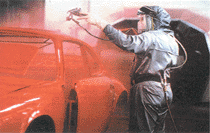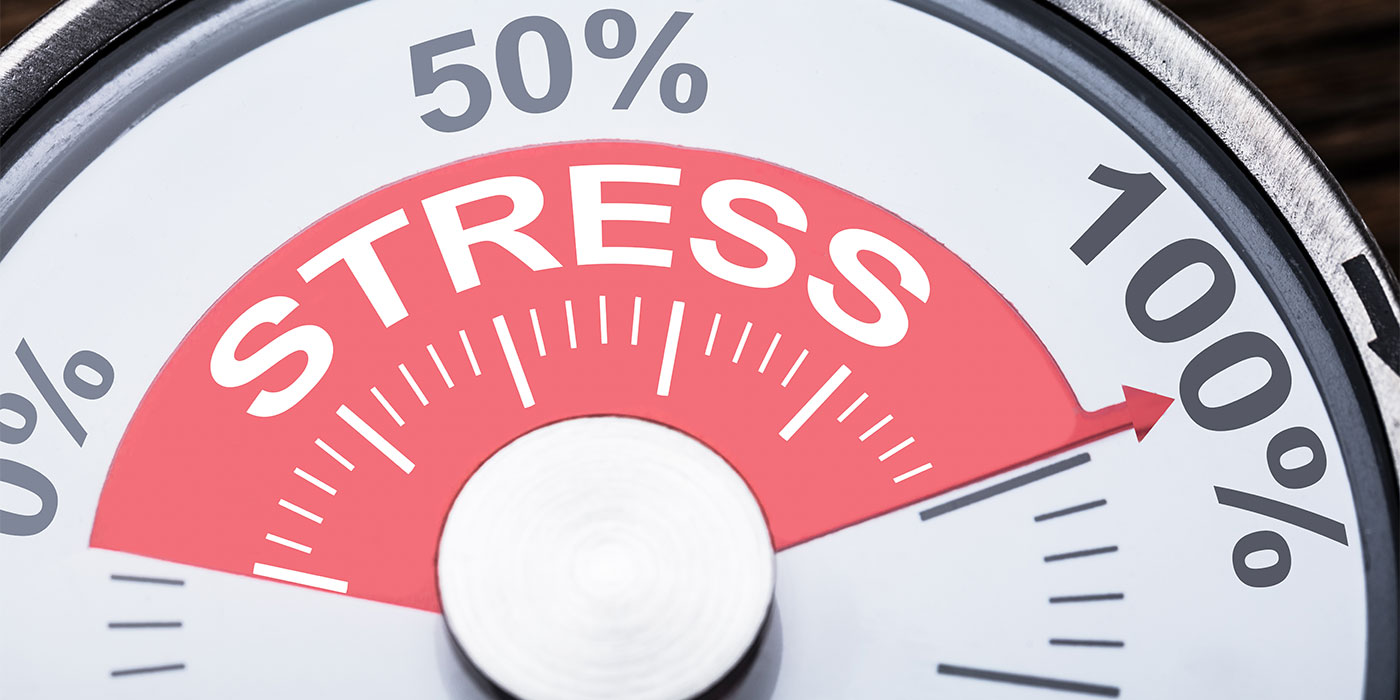
The story’s been repeated thousands of times in the last 40 years, but hopefully after you hear it, you won’t make the same mistake:
Jeff was building his business. His talent and craftsmanship for restoring collision-damaged vehicles brought in many new customers, so he was busy from morning until night. At first, he didn’t suspect the symptoms could be related to his work – he’d cough and wheeze at home in the evening, but he felt fine during the day. But as time passed, he also began experiencing shortness of breath at work. During a brief vacation he felt great – until the first day back at work when he used the polyurethane again. Finally, his doctor diagnosed him with asthma and advised him to quit the business.
While you may not yet know a friend, boss, co-worker or employee with occupational asthma, almost every lung doctor in the country is familiar with the fact that polyurethane paints – clearcoats and hardeners containing isocyanates – can cause asthma and that autobody workers are often the victims. (I first learned about this problem as a medical student in Cleveland in 1977. Today, we use the story of this young autobody shop owner who developed asthma in his early 20s as a case example for teaching medical students about occupational disease.)
For those autobody workers who develop asthma – like our young shop owner – the choices can be unpleasant. The treatment program usually involves both medication and a permanent restriction on working with these paints – for fear of a life threatening asthma attack.
How can you be sure your painters don’t suffer a similar fate? By understanding the health risks they take each day and insisting they use the proper breathing equipment.
A Brief Medical History
At first, this form of asthma was known to lung doctors as TDI asthma – named for toluene diisocyanate, the hardener used most often in early polyurethane paints. Lung problems associated with isocyanates were first recognized in German manufacturing plants before World War II, and asthma from polyurethane paints has been recognized in the United States at least since the 1960s.
TDI is still used in polyurethanes, but other similar chemicals, with names like MDI (diphenylmethane diisocyanate) and HDI (hexamethylene diisocyanate), have become more common. In spite of a movement toward these somewhat safer products, painters and those who work in the same space can still develop asthma. The reason, we now know, is that the same characteristics of polyurethanes that make them such good paints – the chemical reaction that gives them hardness and resistance to chipping, weather and air-pollutants – also cause chemical reactions within the bronchial tubes that lead to asthma in some painters.
Inhaled droplets of isocyanate – the same microscopic droplets that create the most beautiful surfaces on automobiles – stick to cells in the bronchial passages and sometimes gradually cause reactions that produce asthma.
Health Risks
Asthma comes in many varieties, ranging from mild (in most cases) to fatal (fortunately, a much less common event). For someone who becomes sensitized to polyurethane and then develops asthma, a chance for cure exists if the asthma is diagnosed early enough and exposure to polyurethane is severely reduced. For those who choose to leave the industry – thereby eliminating their exposure to polyurethane – daily asthma medication may be required if the asthma has been present for months or longer.
Some painters diagnosed with isocyanate asthma choose to Òtough it out,Ó but the result can be an even worse case of asthma – one that in some cases never clears up. The first painter with isocyanate asthma whom I treated as a patient loved his work. He didn’t want to leave his job, so he took his asthma medicine and kept painting.
In a few unusual cases, painters who were diagnosed with isocyanate asthma and then returned to work against medical advice suffered fatal asthma attacks. More often, however, the outcome is that an experienced painter, now unable to tolerate even tiny amounts of paint, finds he has to start over in a new line of work. For the employer, the consequences can include the loss of a highly skilled painter and the investment in his or her training, as well as the potential for higher worker compensation premiums following a claim for occupational lung disease.
Precautionary Measures
Most painters who work with isocyanates never get asthma. So why are a select few affected?
The situation is similar to other allergies – almost everyone is exposed to cats growing up, but relatively few develop an allergy to cats. And science has yet to come up with a method to predict who will become allergic and who won’t.
At present, we have no way to predict who’s at risk for developing asthma and who isn’t. Until we figure that out, the only safe approach is to make sure everyone takes precautions against the illness.
Those with more than a few years experience in the business are well aware that government and industry standards for health protection have gradually tightened over the years. Paint manufacturers now recommend that all shops use efficiently ventilated spraybooths or spray areas in combination with respirators.
The Occupational Safety and Health Administration (OSHA), which enforces the legal standards for the air level of isocyanate permitted at work, recently clarified its position on respirators for isocyanates in a widely circulated memo. This letter indicated that either air-purifying or supplied-air respirators can be used with isocyanate-containing paints. But if air-purifying respirators are used, they must have an end-of-service-life indicator or the schedule for the change of canisters must be based on objective information – for example, measurements of the air levels of isocyanates in the workplace.
For an employer, the consequences of isocyanate asthma can include the loss of a highly skilled painter and the investment in his or her training, as well as the potential for higher worker compensation premiums following a claim for occupational lung disease.
Since commercially available air-purifying respirators don’t have end-of-service indicators and since measurement of isocyanate in the air requires specialized equipment and consultants, the OSHA memo makes a strong argument for supplied-air respirators.
Recent recommendations from one of the largest HDI paint manufacturers include advice that use of a supplied-air respirator (with positive pressure or continuous flow) Òis mandatoryÓ when airborne isocyanate concentrations are unknown. This approach has long been advocated by the National Institute for Occupational Safety and Health (NIOSH) of the Centers for Disease Control and Prevention when ventilation isn’t sufficient to reduce air levels. The approach is echoed by the Environmental Protection Agency’s Auto Refinishing Shop Project publication ÒSupplied-Air Respirators in Auto Shops,Ó which says, Òit is particularly important to a painter’s health to wear supplied air respirators when spraying paints containing highly toxic chemicals such as isocyanates.Ó
Here’s to a Lung Life …
Though most painters who work with isocyanates never get asthma, precaution is still necessary, since we can’t yet determine who is and isn’t susceptible. As a shop owner, you’re ultimately responsible for the work your painters turn out. Re-dos may be costly to your bottom line, but the loss of a good painter who develops isocyanate asthma is something neither you nor the industry can afford.
Writer William S. Beckett, M.D., is a professor in the Department of Environmental Medicine at the University of Rochester School of Medicine and Dentistry in Rochester, N.Y.













